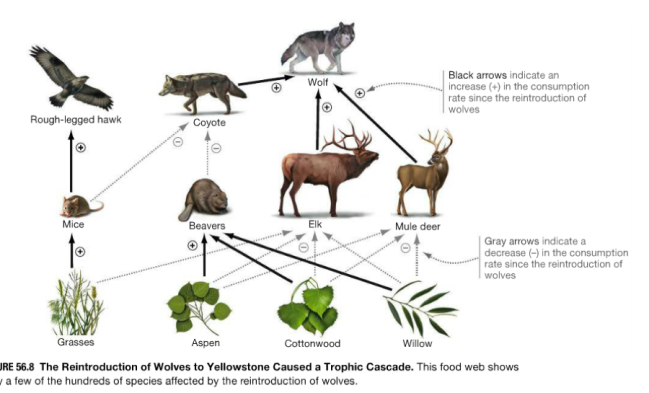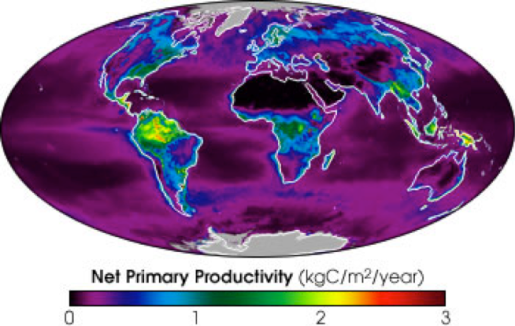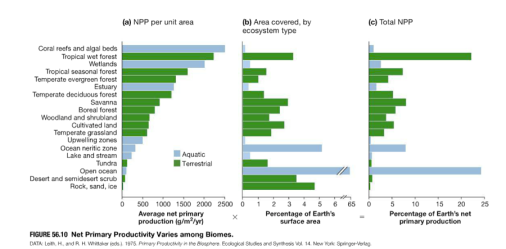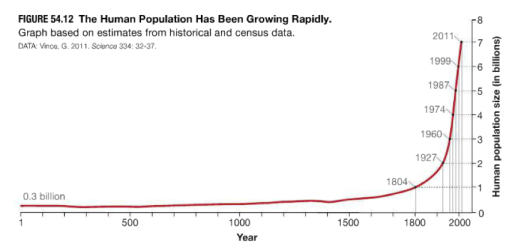Are dogs and wolves the same species?
by prescotthbreeden
The question of whether dogs and wolves are members of the same or different species is a controversial one. To begin with, species classification is a convention used to help aid in our ability to organize nature and it is anything but definitively objective. This should not decrease the importance of classifying species, but before we begin to try and understand the question, we will benefit from understanding that the nature of the question is very philosophical. Always keep in the back of your mind that the personal preference of an individual will always be influential in subjective conclusions. Therefore, to try and be objective about the conversation I would like to discuss the big picture, and in biology, the big picture is always evolution.
Evolution is often described as cumulative processes so slow that they take between thousands and millions of decades to complete (e.g. Dawkins, 1986). This is only part of the picture. We certainly have an in-depth archeological fossil record that shows gradual changes in species over millennia (such as the development of feathers in dinosaurs or the eye-migration of flatfish), however biological changes can also happen in the wink of an eye—at least compared to traditionally conceptualized evolutionary timescales. Most simply, evolution can be defined as change over time. But what kind of change? Does any change constitute evolution? Does any duration sufficiently qualify for “time?” These are important considerations because whatever definition is chosen will create a first premise assumption from which any arguments will flow from—like the way the lens of a camera manipulates light before entering the camera body and forming an image, so too can a first premise assumption influence our perceptions so that our observations fit a desirable theory instead of the natural phenomenon.
Some evolution happens very slowly (such as the previously mentioned examples of feathers in dinosaurs and the eye-migration of flatfish); however, these changes arose most probably due to mutation and sexual selection, not because these changes condoned a functional advantage in evading hazards or finding food. Most examples of evolution are due to a change in the characteristics of a group that enable it to survive, thus evolution can be viewed in this light as a response to changes in the environment. Typically, environments change very slowly and significant changes often ride on the back of natural disasters. The evolution of dinosaurs into birds was due to a two-fold catastrophe. Approximately 200 million years ago, atmospheric oxygen declined nearly 20% causing one of the largest extinction periods in Earth’s history (Berner et al., 2006). This killed off an unprecedented amount of land dwelling animals and threatened aquatic living organisms as well. For example, some species of fish such as tuna evolved ram-air induction (whereby swimming at high velocity forced water across the gills at a higher speed to ensure maximum oxygen diffusion from water). As if global suffocation wasn’t bad enough, to add insult to injury, an asteroid the size of Manhattan slammed into Mexico just a few millennia later. These two factors meant that the only dinosaurs which survived were small and could fly—what we call birds. Predominantly, it is important to remember that changes to the environment are what drive these kinds of selection processes, especially when these changes create significant mortality rates—a concept I will return to later.
The controversy over the classification of dogs and wolves can be seen on numerous levels, but one that stands out for me is the way in which many wolf-dog hybrid enthusiasts are very passionate that the correct term is not “hybrid” but “wolf dog”—since both the dog (Canis lupus familiaris) and the wolf (Canis lupus lupus) are according to some scientists taxonomically sub-species of Canis lupus. While this is a relatively recent distinction (originally, Carl von Line classified the dog as Canis familiaris, a different species than the wolf) the taxonomic nomenclature does not determine whether the mating of two animals qualifies as a hybrid. Hybridization is the interbreeding of individuals from genetically distinct populations, regardless of their taxonomic status (Stronen & Paquet, 2013). Wolves and dogs may be amazingly similar in their genetics, however they are clearly genetically distinct populations (e.g. vanHoldt et al., 2011).

Principal component analysis of all wolf-like canids for the 48K SNP data set: PC1 represents a wild versus domestic canid axis, whereas PC2 separates wolves (n=198) and dogs (n=912) from coyotes (n=57) and red wolves (n=10). Result shows dogs and gray wolves are genetically distinct (Fst=0.165). PC2 in this analysis of the data demonstrate a geographically based population hierarchy within gray wolves and coyotes (vanHoldt et al., 2011)

Plots show ancestry blocks and their assignments for representative individuals of canid populations with average size of blocks, percent ancestry, and number of generations since most recent admixture (t) indicated. Two-ancestor (coyote, A; gray wolf, B) analyses are presented for a Great Lakes wolf from Minnesota (C), a captive red wolf (D), and an Algonquin wolf (E). Three-ancestor analyses (coyote, A; gray wolf, B; dog, F) are presented for a Northeastern coyote from Vermont (G), a Southern coyote from Louisiana (H), and a Midwestern coyote from Ohio (I) – (vanHoldt et al., 2011)
The supposedly infallible “fact” that dogs are descended from wolves took the world by fire with research into mitochondrial DNA and a publication which appeared in Science titled “Multiple and Ancient Origins of the Domestic Dog” (Vila et al., 1997). In this paper, the authors concluded that dogs were 135,000 years old—a conclusion which is sheer nonsense (Larson, 2011; Larson et al., 2012). Over the last decade, geneticists have published paper after paper pointing at different dates and different locations for domestication with very little consensus but most supporting the conclusion that dogs are direct descendants of the wolf. One important reason for this is because the methodology behind examining mitochondrial DNA (mtDNA) has a very debilitating first premise assumption: that the rate of mtDNA mutation is constant in dogs and wolves despite a massive wolf population bottleneck and an exploding dog population. This is a problem because both of these population effects cause genetic drift. Imagine if you take a population and reduce it to a mere handful. How do you tell whether you are looking at the first members of a new species or the surviving members after a population endangerment? Likewise, imagine taking two dogs and deciding you will start your own breed. If your new breed goes through a population explosion, then their DNA will make up a unrepresentative sample of the historical population (this is called the “founder effect”).
Genetic research is awesome, don’t get me wrong, and it cannot be underappreciated that innovations in genetics have opened up wildly exciting new scientific avenues of investigation into organisms. However, genetic analysis is relatively new to the question of speciation in the animal kingdom and some insight to the Canis lupus dilemma can be gained by looking at the overall ecology of dogs and wolves instead of just their sequence of nucleic acids. Research that examines genotypes, high-density single nucleotide polymorphisms, epigenetic methylations, mitochondrial DNA, etc., is literally a whole new world, but it is not the whole picture. The expression of a plant or animal’s DNA is what creates its phenotype (from morphology to behavior), and it is the phenotype that is thus selected for in the environment and we can learn lots by simply examining the phenotype in and of itself.
As previously mentioned, when two genetically distinct species reproduce the offspring is called a hybrid. However in animals, hybridization is a pretty big deal. When sperm meets egg, a zygote is formed, thus ecologists look at both prezygotic (before reproduction) and postzygotic (after reproduction) barriers that make hybridization difficult. Examples of prezygotic barriers include: habitat isolation (where two species are geographically isolated, sometimes living in the same area but rarely meet), behavioral isolation (where two species do not recognize the signals/mating cues of each other or employ different foraging strategies), temporal isolation (where one species might breed in the spring while another breeds in the fall), mechanical isolation (where the “wedding tackle” of one species doesn’t fit in the “hoo-ha” of another species), and genetic isolation (where the sperm and egg of two species are unable to form a zygote). Postzygotic barriers include reduced hybrid viability (where hybrids fail to develop or reach sexual maturity), reduced hybrid fertility (e.g. mules are hybrids of horses and donkeys and are all sterile), and hybrid breakdown (where the offspring of hybrids have further reduced viability and/or fertility).
The behavioral isolation of dogs and wolves is astronomical because behaviorally there are almost no commonalities between them. In fact, leaving dogs aside for a moment, very important behavioral distinctions exist just between different groups of wolves that affect their offspring viability (postzygotic barriers). For example, one of the most important criteria for mate preference in wolves comes down to hunting strategies: wolves with similar hunting and foraging strategies are more likely to mate and teach these strategies to their offspring. Foraging behavior is a phenotypical characteristic that plays a major role in determining the ecological niche of a species—so much so that wolves who employ different foraging strategies also display different types of social relationships.
Very few dogs hunt for food. Even in societies which still use dogs for hunting (such as the indigenous Mayagna people of Nicaragua), dogs rarely make the kill. Their role in the hunt is to bring an animal to ground and make a loud ruckus until the humans can find it and make the killing blow with their machete. In this capacity, dogs are pound for pound as efficient as a rifle in bringing in meat for the indigenous people of Nicaragua, and the dogs benefit by being given leftovers (Koster, 2008). It is certainly true that some dogs (some) opportunistically take down and on occasion eat small animals such as rats, possums, cats, etc. However, dogs like other scavengers fill an important role in the grand ecological picture regarding the flow of biomass (Wikenros et al., 2013).
Hunting in the wild is simply not an available strategy for dogs to survive. One important reason for this is that the energy dogs would expend to take down and eat small prey animals would be much greater than the energy gained by hunting them. This is illustrated with African wild dogs (Lycaon pictus), who pound for pound hunt, kill, and consume more meat than any other predator in Africa—this is not because they are greedy, this is because of their metabolic needs. When you look at African wild dogs, small prey like African hares make up only an average profitability of 0.6kg per hunt (4.8kg per kilometer chased), whereas Wildebeest weighing approximately 100kg make a profitability of 35.2kg per hunt (51kg per kilometer chased). African Wild dogs not only make significantly more meat off of larger prey animals, but they also have a higher success catching them than they do small animals like African hares (38% success versus 31%) (see Creel & Creel, 1995 for Lycaon pictus data). If humans were to go extinct tomorrow, dogs could never fill the role of these kinds of predators. Simply put, dogs are more likely to try and play with a deer than to try and kill it.
As if there is very little difference, dogs are frequently labeled carnivores like their wolf cousins (implying a predatory nature); however ecological foraging models are much more nuanced than simply whether or not the food consumed is animal or plant-based. Dogs are detritivores (i.e. scavengers—animals which live off of dead food sources). Whether it is the kibble we drop in the bowl, the dump which feral dogs scavenge at, or even raw meat or table scraps being tossed from the table, dogs do not kill their food. Whether feral or companion pet, the dog’s niche relies on their ability to live in close proximity to humans—a quality which is typically severely impacted by interbreeding with wolves. Dogs utilize a very different and elongated socialization period that enables them to develop interspecies social bonds much easier (Lord, 2013), and thus the viability of hybrid offspring between dogs and wolves is severely impacted through both prezygotic and postzygotic barriers. Quite simply, just because two animals are capable of interbreeding, claiming they are the same species does not make sense in light of almost all aspects of their phenotype outside of morphology (and even then, calling a Chihuahua a wolf is simply absurd).
Thinking about the foraging strategy of the dog as more closely related to fungi, archaea, worms, and dung beetles as opposed to the apex predator wolf might seem rather unglamorous, however in truth it highlights their ecological and evolutionary success. All life is built on the need for energy and nutrients. Energy needed for life comes from the sun, regardless of the species. Plants use the energy from photons to produce sugar, which is natures way of storing energy from the sun. For this reason, plants are termed “producers” because they create available energy and nutrients for other organisms (such as hydrogen, carbon, nitrogen, oxygen and phosphorus—among other nutrients). Through nutrients, organisms manipulate the stored energy and use it to produce proteins that enable the organism to survive and reproduce. The availability of these resources on a large scale is quantified in ecology as Net Primary Productivity (NPP).
NPP is essentially a quantification of the available resources organisms need to survive. If you look on the map above, you will see that NPP is highest in the tropics and lowest in the tundra. The niche of the wolf, compared to the tropics, is in regions of the world where NPP is strikingly low—emphasizing their need to hunt and kill large prey. Humans appropriate 24% of the NPP of the entire planet. Think about that for a moment… nearly one-quarter of all available energy on the planet, yet we are just one of thousands if not millions of species cohabitating this blue ball in our corner of the solar system. We can appreciate that with the laws of the conservation of energy, large consumption leads to large waste, waste that is still rich with hydrogen, carbon, nitrogen, sulfur and phosphorus. While dogs most certainly share a common ancestor with the wolf, their emergence as a species is due to the tremendous advantage of having proximity to the largest appropriation of nutrients on the planet. Coppinger has long emphasized the difference between “domestic” (living amongst humans) and “domesticated” (made to live amongst humans). With no evidence that humans were ever sophisticated enough to establish breeding programs to artificially select for tame qualities like the silver fox experiment, it is not logical to believe that dogs could have emerged through careful pup selection. Even today, it is extremely difficult to create human-socialized wolves (who still behave nothing like dogs) and inbreeding is an enormous issue within current populations—how would humans have overcome these issues when we still hadn’t become sophisticated enough to harness agriculture?
It is hard to imagine that sometimes we forget just how much we have changed this planet. If the consumption of nearly 25% of the planet’s NPP doesn’t make you think for a moment, then consider that 90% of all mammalian biomass on the planet consists of humans and domesticated animals. 10,000 years ago, this number was approximately 0.1%. While rambling around since approximately 200,000 years ago, human population did not reach one billion until 1804. By 1927, human population reached two billion. 1960: three billion. 1974: four billion. 1987: five billion. 1999: six billion. By the year 2011, human population reached seven billion (population data and biomass percentages taken from Vince, 2011). In parallel with increasing human population, it is estimated that there are approximately one billion dogs around the world now, whereas wolves are on the brink of extinction. At this rate, it is only a matter of time before human population will exceed the appropriable NPP of the planet and very few undomesticated species will exist outside of detritivores feeding on human waste as the human population crashes into unsustainability.
The story is very romantic: man and wolf, hunting and foraging together. Unfortunately there is simply no evidence; and if I’m being charitable, the probability that dogs evolved directly from grey wolves is extremely unlikely. While many similarities are perceived to exist between dog and wolf, upon closer examination, the similarities are almost impossible to find.
References:
Berner, R. A., VandenBrooks, J. M., & Ward, P. D. (2007). Oxygen and Evolution. Science, 316(5824), 557–558. doi:10.1126/science.1142654
Brucker, R. M., & Bordenstein, S. R. (2012). Speciation by symbiosis. Trends in Ecology & Evolution, 27(8), 443–451. doi:10.1016/j.tree.2012.03.011
Creel, S., & Creel, N. M. (1995). Communal hunting and pack size in African wild dogs, Lycaon pictus. Animal Behaviour, 50(5), 1325–1339.
Freeman, S., Quiliin, K., & Allison, L. (2013). Biological Science (5th edition.). Benjamin Cummings.
Koster, J. M. (2008). Hunting with Dogs in Nicaragua: An Optimal Foraging Approach. Current Anthropology, 49(5), 935–944. doi:10.1086/595655
Larson, G. (2011). Genetics and Domestication: Important Questions for New Answers. Current Anthropology, 52(S4), S485–S495. doi:10.1086/658401
Larson, G., Karlsson, E. K., Perri, A., Webster, M. T., Ho, S. Y. W., Peters, J., … Lindblad-Toh, K. (2012). Rethinking dog domestication by integrating genetics, archeology, and biogeography. Proceedings of the National Academy of Sciences, 109(23), 8878–8883. doi:10.1073/pnas.1203005109
Lord, K. (2013). A Comparison of the Sensory Development of Wolves (Canis lupus lupus) and Dogs (Canis lupus familiaris). Ethology, 119(2), 110–120. doi:10.1111/eth.12044
Rousset, F., & Solignac, M. (1995). Evolution of single and double Wolbachia symbioses during speciation in the Drosophila simulans complex. Proceedings of the National Academy of Sciences, 92(14), 6389–6393.
Stronen, A. V., & Paquet, P. C. (2013). Perspectives on the conservation of wild hybrids. Biological Conservation, 167, 390–395. doi:10.1016/j.biocon.2013.09.004
Vince, G. (2011). An Epoch Debate. Science, 334(6052), 32–37. doi:10.1126/science.334.6052.32
vonHoldt, B. M., Pollinger, J. P., Earl, D. A., Knowles, J. C., Boyko, A. R., Parker, H., … Wayne, R. K. (2011). A genome-wide perspective on the evolutionary history of enigmatic wolf-like canids. Genome Research, 21(8), 1294–1305. doi:10.1101/gr.116301.110
Wikenros, C., Sand, Hã¥., Ahlqvist, P., & Liberg, O. (2013). Biomass Flow and Scavengers Use of Carcasses after Re-Colonization of an Apex Predator. PLoS ONE, 8(10), e77373. doi:10.1371/journal.pone.0077373




Great article. I love it as both a dog lover and a biologist. I teach a non major’s bio course at a local college, and you touch on many of the topics we cover in our curriculum. If you don’t object, I’m thinking it might make a good “media assignment” for my students to read, as I’m always trying to show them how biology ties in with everyday life (and what can be more everyday to many people than dogs?)
Absolutely! Don’t mind at all
EXCELLENT ARTICLE!
Fantastic article. I don’t fully understand how to read the Scatter plot analysis of SNP frequencies in Canid populations or Heterospecific influence of SNP frequencies….I could cope with other graphs ok.
Hey Bex, the first graph is a biaxial graph – any points that line up on top of each other would indicate that they are not genetically distinct populations. For simplicity I removed the second graph since it was showing essentially the same data in the ancestry blocks. Hope that helps!
Wow thanks for the explanation, yes it does help. So does the ref list for further reading, thank you. ps. I have just had a wolf-dog enrol in puppy class. Wolf-dogs in the UK as far as I know are dogs that look like wolves, not a dog-wolf hybrid. I will be clarifying that !